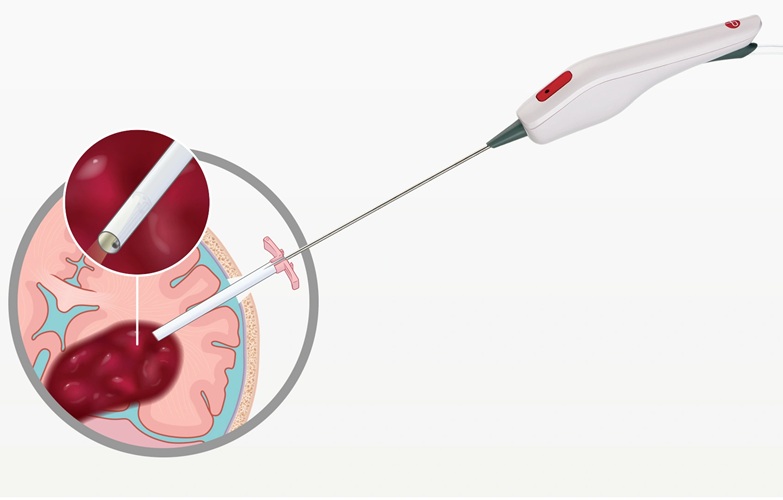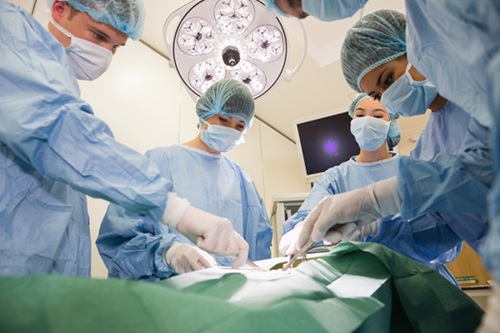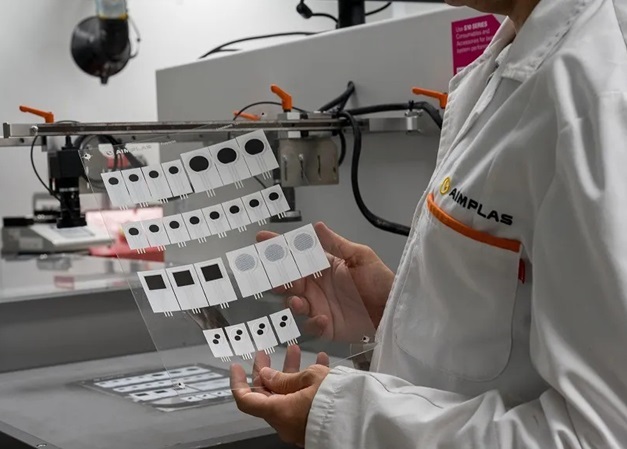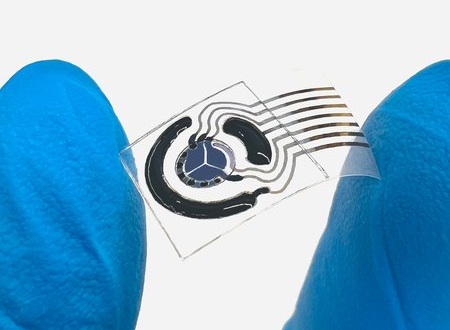Home Renal Dialysis Machine Offers Patients More Freedom
|
By HospiMedica International staff writers Posted on 18 May 2009 |
A new home dialysis machine helps patients with kidney failure and end stage renal disease (ESRD) self-administer peritoneal dialysis at home while they sleep.
The Liberty Cycler is intended for use in automated peritoneal dialysis (APD) therapy, regulating the exchange of used and fresh dialysis fluid while the patient sleeps; but unlike hemodialysis, the Liberty does not require needles. The Liberty Cycler fills and empties the abdomen with dialysate three to five times at night during sleep; in the morning, dialysate flows into the abdomen, and the catheter is detached from the system. The dialysate is carried in the peritoneal cavity during the day. During that time, normal daily activities can be maintained. At night, the catheter is reattached to the cycler before sleep, to perform APD one again.
The Liberty Cycler features a large color touch screen that gives easy to follow directions accompanied by pictures, an easy-to-load APD treatment cassette, and special connectors that are automatically inserted into the catheter lumen, making it easy to perform dialysate exchanges. The Liberty Cycler has a small footprint, small enough to fit on a nightstand, and requires no special plumbing or electrical hook-ups. The Liberty Cycler is available only through the dialysis facilities of the developer Fresenius Medical Care (Bad Homburg, Germany).
"Fresenius Medical Care recognizes that many dialysis patients have active lifestyles, and want more choices for treatment,” said Michael Lazarus, M.D., chief medical officer and senior executive VP of Fresenius Medical Care North America. "Many patients have discovered that dialyzing while they sleep provides them with the freedom to continue to pursue their careers, care for their families, or enjoy their years of retirement.”
The fluids used in APD contain either a glucose and amino acid solution or a compound called icodextrin to remove water from the patients blood, with the glucose solution most commonly used. The glucose "strength” (1.5%, 2.5% or 4.25%) of the solution determines how much water is removed--the higher the concentration, the greater the effect. The amino acids in the solution are used to improve the patient's nutritional condition. The benefits of the icodextrin fluid, on the other hand, are that it removes more water than the glucose solution for longer exchange intervals, and that it is glucose- free, which is advantageous both for the peritoneum and the body as a whole.
Related Links:
Fresenius Medical Care
The Liberty Cycler is intended for use in automated peritoneal dialysis (APD) therapy, regulating the exchange of used and fresh dialysis fluid while the patient sleeps; but unlike hemodialysis, the Liberty does not require needles. The Liberty Cycler fills and empties the abdomen with dialysate three to five times at night during sleep; in the morning, dialysate flows into the abdomen, and the catheter is detached from the system. The dialysate is carried in the peritoneal cavity during the day. During that time, normal daily activities can be maintained. At night, the catheter is reattached to the cycler before sleep, to perform APD one again.
The Liberty Cycler features a large color touch screen that gives easy to follow directions accompanied by pictures, an easy-to-load APD treatment cassette, and special connectors that are automatically inserted into the catheter lumen, making it easy to perform dialysate exchanges. The Liberty Cycler has a small footprint, small enough to fit on a nightstand, and requires no special plumbing or electrical hook-ups. The Liberty Cycler is available only through the dialysis facilities of the developer Fresenius Medical Care (Bad Homburg, Germany).
"Fresenius Medical Care recognizes that many dialysis patients have active lifestyles, and want more choices for treatment,” said Michael Lazarus, M.D., chief medical officer and senior executive VP of Fresenius Medical Care North America. "Many patients have discovered that dialyzing while they sleep provides them with the freedom to continue to pursue their careers, care for their families, or enjoy their years of retirement.”
The fluids used in APD contain either a glucose and amino acid solution or a compound called icodextrin to remove water from the patients blood, with the glucose solution most commonly used. The glucose "strength” (1.5%, 2.5% or 4.25%) of the solution determines how much water is removed--the higher the concentration, the greater the effect. The amino acids in the solution are used to improve the patient's nutritional condition. The benefits of the icodextrin fluid, on the other hand, are that it removes more water than the glucose solution for longer exchange intervals, and that it is glucose- free, which is advantageous both for the peritoneum and the body as a whole.
Related Links:
Fresenius Medical Care
Latest Critical Care News
- 'Universal' Kidney to Match Any Blood Type
- AI Heart Attack Risk Assessment Tool Outperforms Existing Methods
- Smartphone Imaging System Enables Early Oral Cancer Detection
- Swallowable Pill-Sized Bioprinter Treats GI Tract Injuries

- Personalized Brain “Pacemakers” Could Help Patients with Hard-To-Treat Epilepsy
- Microscopic DNA Flower Robots to Enable Precision Medicine Delivery
- Origami Robots to Deliver Medicine Less Invasively and More Effectively
- Improved Cough-Detection Technology Aids Health Monitoring
- AI Identifies Children in ER Likely to Develop Sepsis Within 48 Hours
- New Radiofrequency Therapy Slows Glioblastoma Growth
- Battery-Free Wireless Multi-Sensing Platform Revolutionizes Pressure Injury Detection
- Multimodal AI to Revolutionize Cardiovascular Disease Diagnosis and Treatment
- AI System Reveals Hidden Diagnostic Patterns in Electronic Health Records
- Highly Sensitive On-Skin Sensing Monitor Detects Vitamin B6 and Glucose in Sweat
- Artificial Intelligence Revolutionizing Pediatric Anesthesia Management
- New Device Detects Tuberculosis DNA Directly in Exhaled Air
Channels
Surgical Techniques
view channel
Minimally Invasive Endoscopic Surgery Improves Severe Stroke Outcomes
Intracerebral hemorrhage, a type of stroke caused by bleeding deep within the brain, remains one of the most challenging neurological emergencies to treat. Accounting for about 15% of all strokes, it carries... Read more
Novel Glue Prevents Complications After Breast Cancer Surgery
Seroma and prolonged lymphorrhea are among the most common complications following axillary lymphadenectomy in breast cancer patients. These postoperative issues can delay recovery and postpone the start... Read morePatient Care
view channel
Revolutionary Automatic IV-Line Flushing Device to Enhance Infusion Care
More than 80% of in-hospital patients receive intravenous (IV) therapy. Every dose of IV medicine delivered in a small volume (<250 mL) infusion bag should be followed by subsequent flushing to ensure... Read more
VR Training Tool Combats Contamination of Portable Medical Equipment
Healthcare-associated infections (HAIs) impact one in every 31 patients, cause nearly 100,000 deaths each year, and cost USD 28.4 billion in direct medical expenses. Notably, up to 75% of these infections... Read more
Portable Biosensor Platform to Reduce Hospital-Acquired Infections
Approximately 4 million patients in the European Union acquire healthcare-associated infections (HAIs) or nosocomial infections each year, with around 37,000 deaths directly resulting from these infections,... Read moreFirst-Of-Its-Kind Portable Germicidal Light Technology Disinfects High-Touch Clinical Surfaces in Seconds
Reducing healthcare-acquired infections (HAIs) remains a pressing issue within global healthcare systems. In the United States alone, 1.7 million patients contract HAIs annually, leading to approximately... Read moreHealth IT
view channel
Printable Molecule-Selective Nanoparticles Enable Mass Production of Wearable Biosensors
The future of medicine is likely to focus on the personalization of healthcare—understanding exactly what an individual requires and delivering the appropriate combination of nutrients, metabolites, and... Read moreBusiness
view channel
Philips and Masimo Partner to Advance Patient Monitoring Measurement Technologies
Royal Philips (Amsterdam, Netherlands) and Masimo (Irvine, California, USA) have renewed their multi-year strategic collaboration, combining Philips’ expertise in patient monitoring with Masimo’s noninvasive... Read more
B. Braun Acquires Digital Microsurgery Company True Digital Surgery
The high-end microsurgery market in neurosurgery, spine, and ENT is undergoing a significant transformation. Traditional analog microscopes are giving way to digital exoscopes, which provide improved visualization,... Read more
CMEF 2025 to Promote Holistic and High-Quality Development of Medical and Health Industry
The 92nd China International Medical Equipment Fair (CMEF 2025) Autumn Exhibition is scheduled to be held from September 26 to 29 at the China Import and Export Fair Complex (Canton Fair Complex) in Guangzhou.... Read more














